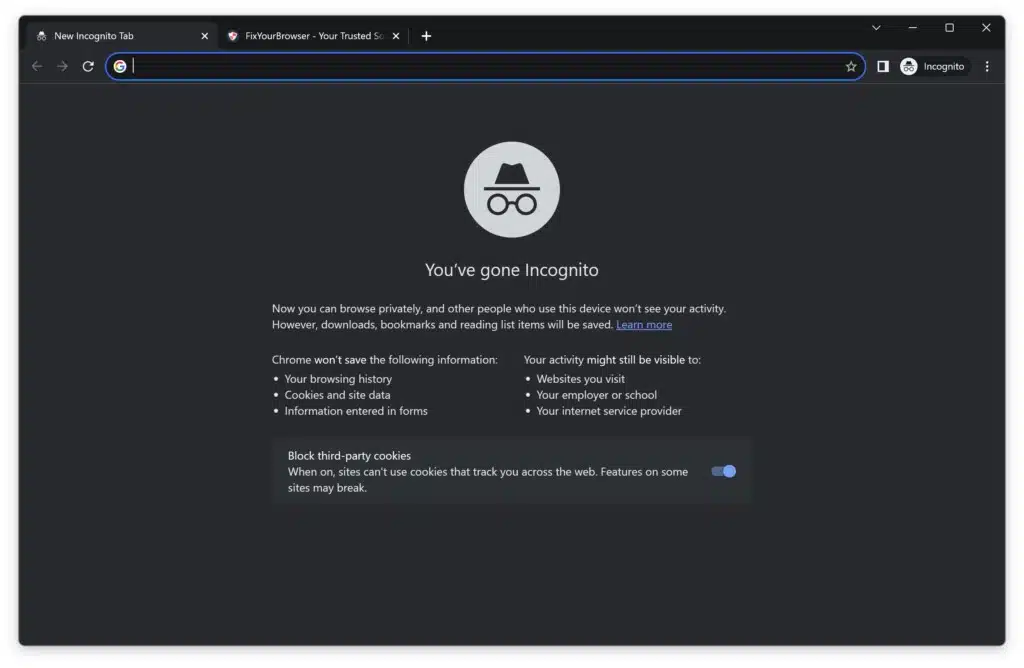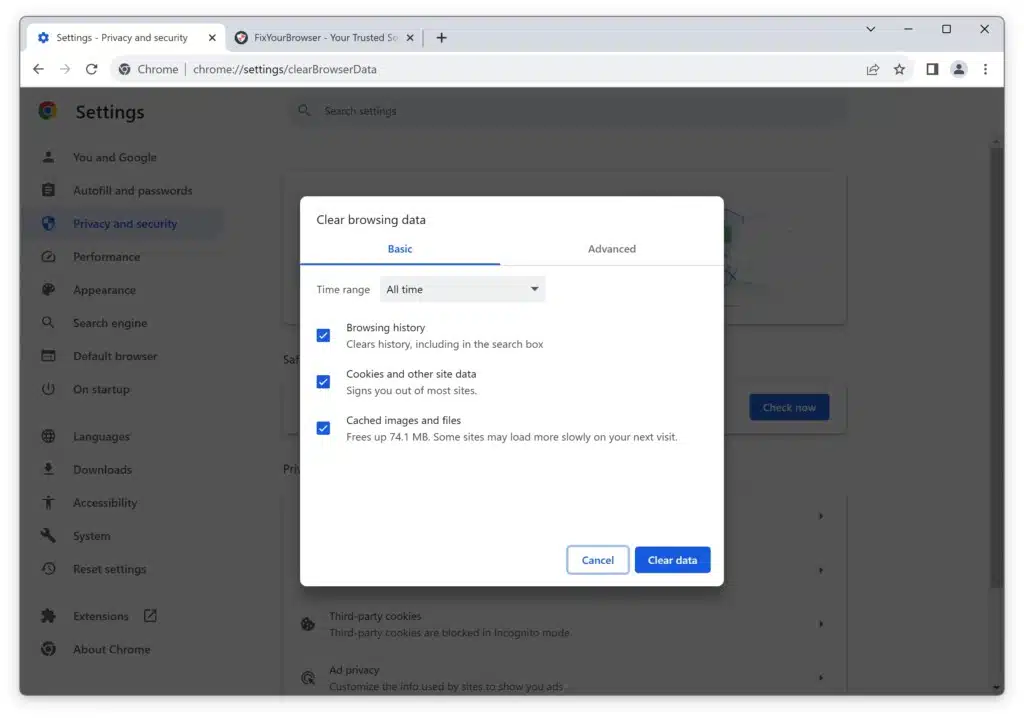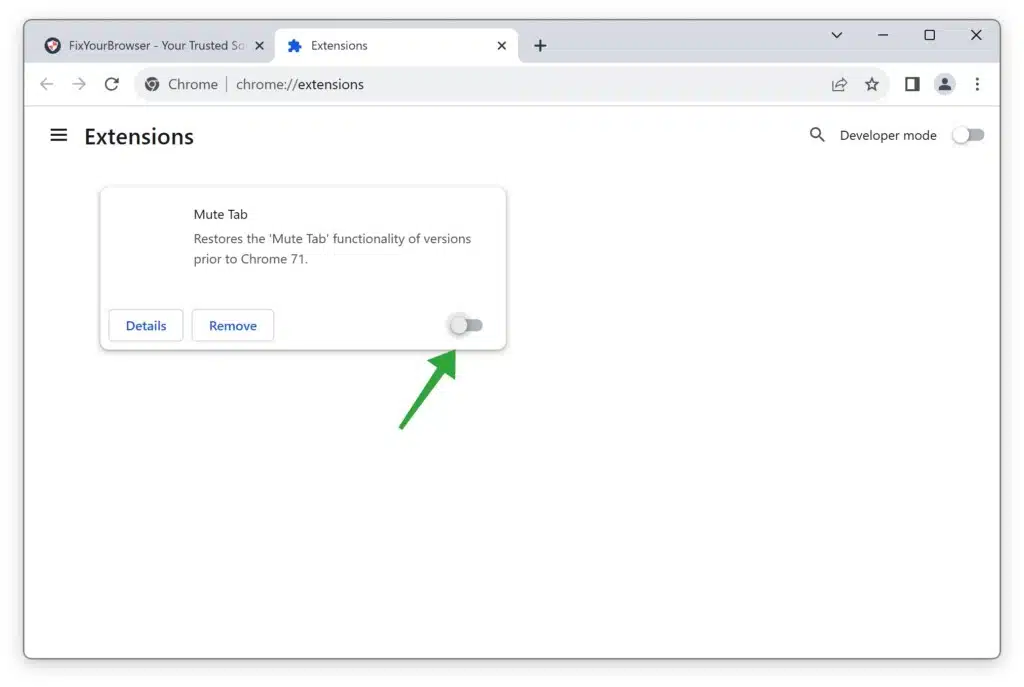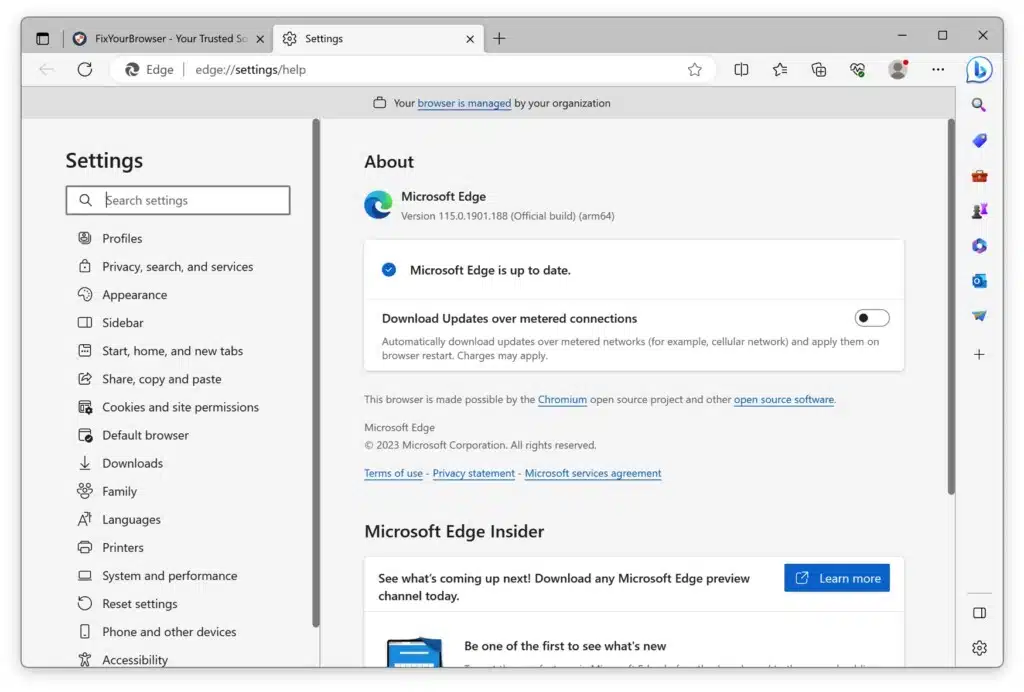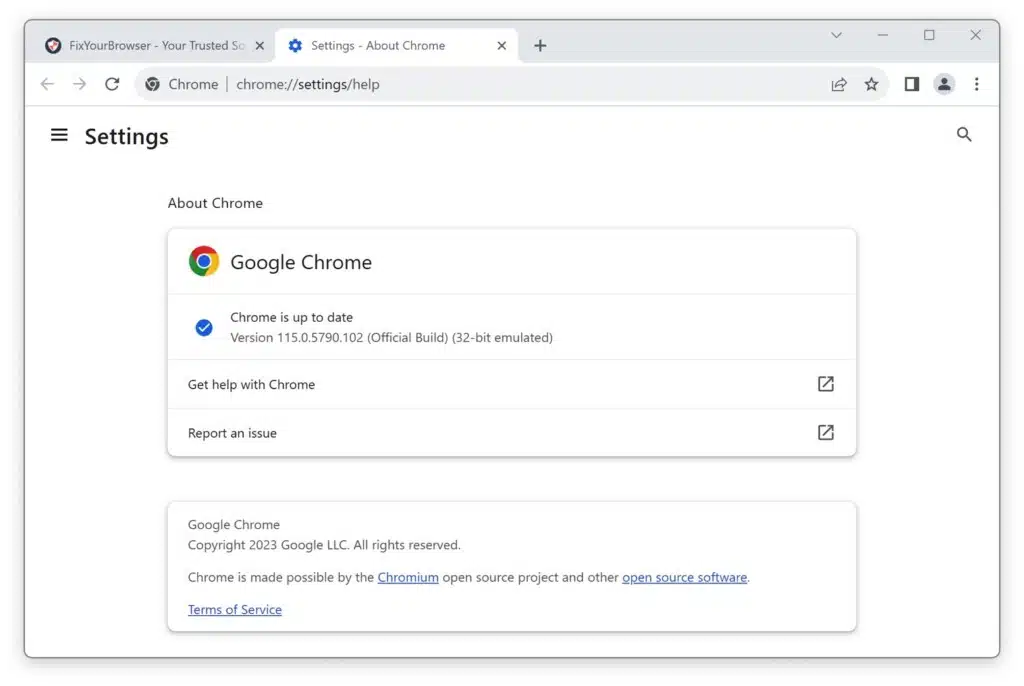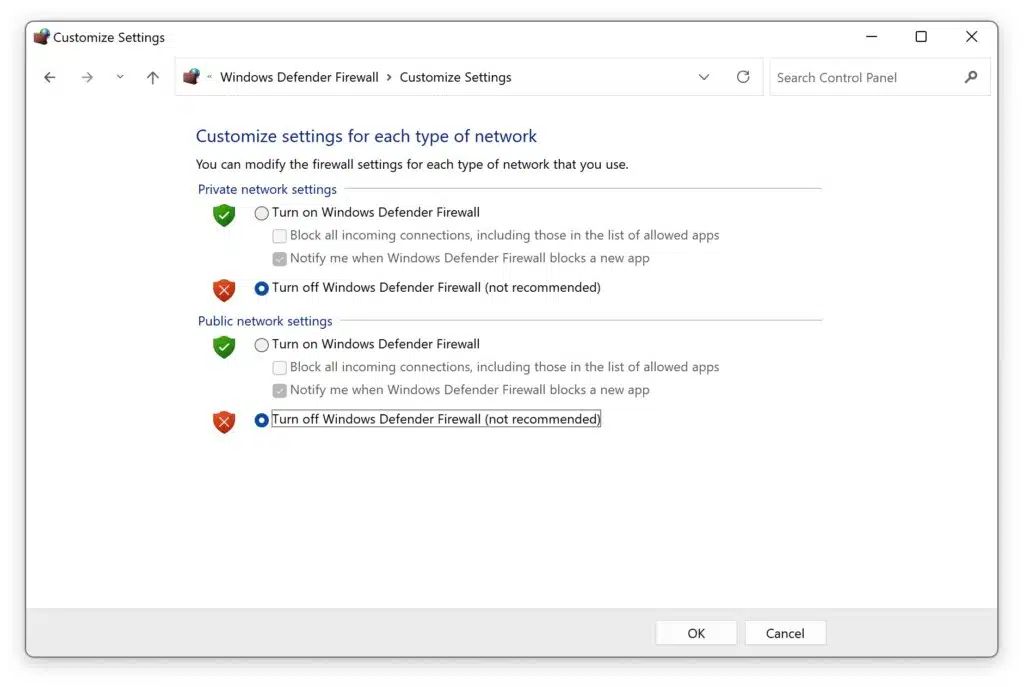Fix the err_too_many_redirects (“try clearing your cookies“) error in Google Chrome with these helpful solutions. Learn about the possible causes of the error, including misconfigured websites and corrupt cache files. Clearing the browser’s cache data and disabling Chrome extensions can often resolve the issue. If the problem persists, contacting the website administrator or switching to another browser may be necessary.
I advise you to follow all steps in this article to resolve this error. Let’s get to it.
Understanding the Err Too Many Redirects Error in Chrome
What is the err too many redirects error in Google Chrome?
The err_too_many_redirects error in Google Chrome occurs when a webpage is stuck in a redirection loop. This means that the browser is being redirected from one URL to another, which then redirects back to the original URL, creating a loop that it cannot escape from. As a result, the browser displays the err_too_many_redirects error message.
Causes of the err too many redirects error
There are several possible causes for the err_too_many_redirects error in Google Chrome. Some of the common triggers include:
- Misconfigured website: If the website’s settings are not properly configured, it can lead to a redirection loop and trigger the error.
- Corrupt cache files: Cached data stored in the browser can become corrupted over time. When the browser tries to access a webpage, it may encounter conflicts with the cached data, resulting in the err_too_many_redirects error.
- Chrome extensions: Certain Chrome extensions, such as VPN or ad-blocking extensions, can interfere with the normal browsing process and cause redirection loops.
Common triggers and symptoms of the error
When encountering the err_too_many_redirects error in Chrome, there are some common triggers and symptoms to be aware of. These include:
- Outdated Chrome browser: Using an outdated version of Chrome can sometimes trigger the error. It is important to keep the browser updated to the latest version to avoid such issues.
- Problems with cookies: Issues with cookies, such as corrupted or outdated cookies, can contribute to the err_too_many_redirects error.
- Coding errors on the site: If there are coding errors or misconfigurations on the website, it can lead to redirection loops and trigger the error.
- Malware infection: In some cases, a malware infection on the user’s computer can cause the browser to be redirected repeatedly, resulting in the err_too_many_redirects error.
To resolve the err_too_many_redirects error in Chrome, there are several steps that can be taken. These include clearing the browser’s cache data, updating Chrome to the latest version, disabling or removing problematic extensions, and running anti-malware programs to ensure the computer is free from any infections.
If the issue persists, it may be necessary to contact the website administrator for further assistance. In some cases, switching to another browser temporarily can also be considered a workaround until the issue is resolved.
How to fix the ERR_TOO_MANY_REDIRECTS error
As I mentioned before, this error occurs when a webpage is stuck in a redirection loop, where the browser is continuously redirected between different URLs. Luckily, there are several troubleshooting steps you can take to fix this error and get back to browsing smoothly. Here is how to fix it.
Reload the webpage
One of the simplest methods to fix the “err_too_many_redirects” error is to reload the webpage. Sometimes, the error may occur due to a temporary glitch or network connectivity issue. By refreshing the page, you give Chrome another chance to establish a secure connection with the website. It is best to execute a hard reload.
- Hold ‘CTRL’ on your keyboard.
- While holding ‘CTRL’ hit the F5 button.
Use incognito mode
Chrome’s incognito mode can help bypass specific errors, including the “err_too_many_redirects” error. Open a new incognito window and try reaccessing the website. This mode disables extensions and cached data, which can sometimes interfere with server connections.
- Keyboard Shortcut: Press the following keyboard shortcut depending on your operating system:
- Windows/Linux: Press
Ctrl + Shift + N. - macOS: Press
Command + Shift + N.
- Windows/Linux: Press
- Menu:
- Click on the three-dot menu icon (⋮) in the top-right corner of the Chrome window.
- From the dropdown menu, select “New incognito window.”
- Address Bar (Omnibox):
- You can also open an incognito window directly from the address bar (omnibox).
- Click on the address bar to focus on it.
- Type
chrome://incongitoand press Enter. This will open a new incognito window.
Clear the browser’s cache data
One common cause of the “err_too_many_redirects” error is corrupting cache files in your browser. Clearing the cache data can often resolve the issue.
To clear the cache in Google Chrome, follow these steps:
- Click on the three-dot menu icon in the top-right corner of the browser window.
- Select “Settings” from the dropdown menu.
- Scroll down and click on “Privacy and security” in the left sidebar.
- Click on “Clear browsing data.”
- Choose the time range for which you want to clear the cache. To clear all cache data, select “All time.”
- Check the box next to “Cached images and files.”
- Click on the “Clear data” button.
After clearing the cache, try accessing the website again to see if the error persists.
Disable problematic Chrome extensions
Certain Chrome extensions, such as VPN or ad-blocking extensions, can interfere with the normal functioning of websites and trigger the “err_too_many_redirects” error. To check if a problematic extension is causing the issue, follow these steps:
- Click on the three-dot menu icon in the top-right corner of the browser window.
- Select “More tools” from the dropdown menu.
- Click on “Extensions.”
- Disable all extensions by toggling the switch next to each one.
- Restart Chrome and try accessing the website again.
If the error is resolved after disabling the extensions, you can enable them one by one to identify the specific extension causing the issue.
Deactivate VPN temporary
If you are using a VPN (Virtual Private Network), it may be causing the err_too_many_redirects error. Try disconnecting from the VPN and see if the error is resolved. If you need a VPN for other purposes, try connecting to a different server or contact your VPN service provider for assistance.
Check for misconfigurations in the website settings
Misconfigurations in the website settings can also lead to the “err_too_many_redirects” error. If you are the website owner or administrator, check the following settings:
- Ensure that the website’s URL settings are correctly configured. Double-check the domain settings, redirects, and any URL rewriting rules.
- Verify that the website’s SSL certificate is properly installed and configured. SSL-related issues can sometimes trigger the error.
- If you are using WordPress, check the caching settings and clear the WordPress cache if necessary.
- Examine any recent changes made to the website’s configuration or settings that could be causing the error.
By addressing any misconfigurations in the website settings, you may be able to resolve the “err_too_many_redirects” error.
Resolve issues with SSL certificates
SSL certificate problems can also contribute to the occurrence of the “err_too_many_redirects” error. To troubleshoot SSL certificate issues, follow these steps:
- Ensure that the SSL certificate is valid and has not expired.
- Check that the SSL certificate is properly installed on the server.
- Verify that the SSL certificate is correctly configured in the website’s server settings.
- Consider contacting your SSL certificate provider for assistance if you are unsure about any of the above steps.
By resolving any SSL certificate issues, you can eliminate one potential cause of the “err_too_many_redirects” error.
Address faulty WordPress plugins
If you are using WordPress and experiencing the “err_too_many_redirects” error, it is possible that a faulty plugin is causing the issue. To address this, follow these steps:
- Disable all WordPress plugins by accessing the “Plugins” section in the WordPress dashboard and deactivating them.
- Clear the WordPress cache using a caching plugin if you have one installed.
- Re-enable the plugins one by one and check if the error reoccurs after enabling each plugin. This will help identify the specific plugin causing the issue.
- Once you identify the problematic plugin, consider updating it to the latest version or finding an alternative plugin with similar functionality.
By addressing faulty WordPress plugins, you can eliminate them as a potential cause of the “err_too_many_redirects” error.
Examine the site’s .htaccess file
The .htaccess file is a configuration file used by websites hosted on Apache servers. Issues with this file can also trigger the “err_too_many_redirects” error. To examine the .htaccess file, follow these steps:
- Access your website’s root directory using an FTP client or a file manager provided by your hosting provider.
- Look for the .htaccess file and download it to your computer.
- Open the .htaccess file using a text editor.
- Check for any misconfigurations or redirect rules that could be causing the error.
- If you are unsure about the contents of the .htaccess file, consider seeking assistance from your website developer or hosting provider.
By examining and correcting any issues with the .htaccess file, you can potentially resolve the “err_too_many_redirects” error.
Taking these troubleshooting steps can help you resolve the “err_too_many_redirects” error in Google Chrome. If the issue persists, it may be necessary to contact the website administrator or consider switching to another browser as a temporary workaround. Remember to keep your browser and extensions updated, regularly clear cache data, and maintain a secure browsing environment to minimize the occurrence of such errors.
Switch to an alternative web browser
If you have exhausted all other options and the issue persists, consider switching to an alternative web browser. While Google Chrome is a popular choice for many users, sometimes certain websites may have compatibility issues with Chrome. By switching to another browser such as Mozilla Firefox or Microsoft Edge, you may be able to access the website without encountering the “err_too_many_redirects” error.
Update the Chrome browser
An outdated Chrome browser can sometimes contribute to the occurrence of the “err_too_many_redirects” error. It’s important to keep your browser up to date to ensure compatibility with websites and to benefit from the latest bug fixes and security enhancements. To update Chrome, follow these steps:
- Open Google Chrome.
- Click on the three-dot menu icon located in the top-right corner of the browser window.
- Hover over the “Help” option in the dropdown menu.
- Select “About Google Chrome” from the submenu.
- Chrome will automatically check for updates and install them if available.
- Restart the browser to apply the updates.
Corrupt or outdated cookies can sometimes cause the “err_too_many_redirects” error. Clearing your browsing data, including cookies, can help resolve this issue. Here’s how you can delete cookies in Chrome:
- Open Google Chrome.
- Click on the three-dot menu icon in the top-right corner.
- Select “Settings” from the dropdown menu.
- Scroll down and click on “Privacy and security” in the left sidebar.
- Click on “Clear browsing data” under the “Privacy and Security” section.
- In the popup window, make sure the “Cookies and other site data” option is selected.
- Choose the time range for which you want to delete cookies (e.g., “Last hour,” “Last 24 hours,” “All time”).
- Click on the “Clear data” button to delete the cookies.
- Restart Chrome and check if the error persists.
Contact the website administrator for assistance
If none of the above methods resolve the “err_too_many_redirects” error, it may be necessary to reach out to the website administrator for assistance. The error could be due to a misconfigured website or server settings, which only the administrator can address. Contact the website owner or administrator and provide them with detailed information about the error you are experiencing. They will be able to investigate the issue further and provide a solution.
Running anti-malware programs to detect and remove malware
In some cases, the “err_too_many_redirects” error can be caused by a malware infection on your computer. Malicious software can interfere with your browsing experience and lead to various errors, including excessive redirects. Running anti-malware programs can help detect and remove any malware present on your system. Consider using reputable antivirus or anti-malware software to scan your computer and eliminate any potential threats. Ensure that your antivirus software is up to date before performing a scan.
AdwCleaner free
- Download and install AdwCleaner from the official website or a trusted source.
- Close all unnecessary programs to ensure a thorough scan.
- Launch AdwCleaner (you may need administrative privileges by right-clicking and selecting “Run as Administrator”).
- Accept the End User License Agreement (EULA) to proceed.
- Update AdwCleaner if an update is available.
- Start the scan by clicking on the “Scan” or “Scan Now” button.
- Wait for the scan to complete; this may take some time.
- Review the scan results, which will show detected items like adware, browser hijackers, and toolbars.
- Select the items you want to remove and click “Clean & Repair.”
- Follow the on-screen instructions to proceed with the removal. Close any open programs or browsers if prompted.
- Reboot your computer if required to complete the removal process.
By following these additional methods, you should be able to troubleshoot and resolve the “err_too_many_redirects” error in Google Chrome. Remember to always keep your browser and security software up to date to minimize the risk of encountering such errors in the future.
Disable Firewall
Temporarily disabling the Windows Firewall can help determine if it is causing the “err_too_many_redirects” error.
Here’s how you can disable the Windows Firewall:
- Press Windows + R on your keyboard to open the Run dialog box.
- Type firewall.cpl and press Enter to open the Firewall settings.
- On the window’s left side, click Turn Windows Defender Firewall on or off.
- Select the Turn off Windows Defender Firewall option for private and public networks.
- Click OK to save the changes and check if the error is resolved.
Seek Help from Support Forums or Professionals
If you have exhausted the troubleshooting steps mentioned above and can still not resolve the “err_too_many_redirects” error, seeking help from support forums or professionals can provide valuable assistance. Here are a few resources you can consider:
- Support forums: Online forums dedicated to web development, browser-related issues, or SSL certificates can be a great source of information. Participate in these forums, describe your problem in detail, and seek guidance from experienced users or moderators.
- Professional assistance: In complex cases or situations where you lack technical expertise, consulting with professionals such as web developers, IT specialists, or cybersecurity experts can be beneficial. They can analyze the issue thoroughly and provide tailored solutions based on your circumstances.
Resolving the “err_too_many_redirects” error requires a systematic approach and may vary depending on the underlying cause. By following the essential precautions, additional troubleshooting steps, and seeking help from appropriate resources, you can increase the chances of resolving the error effectively.
I hope this helped. Thank you for reading!
Also read: How to fix “Your Connection is Not Private” error in Google Chrome.

